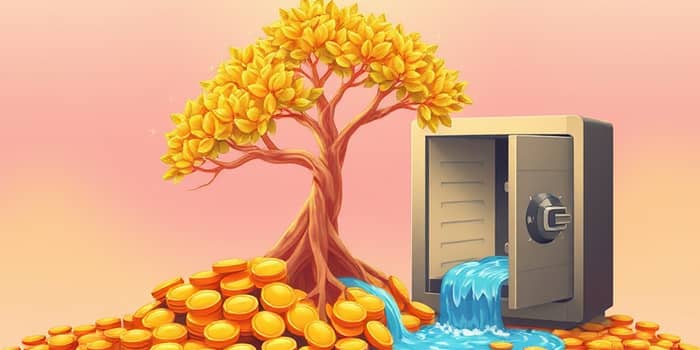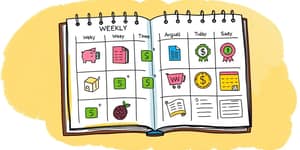Having a reliable reserve of cash can be a robust financial safety net when life throws unexpected challenges your way.
Understanding the Purpose and Importance
An emergency fund is designed to cover unplanned costs such as medical bills, sudden job loss, auto repairs, or urgent home maintenance. By maintaining this buffer, you can reduce the need for high-interest debt like credit cards or personal loans that can derail your long-term goals.
For individuals, this means peace of mind during personal crises. For small businesses, a healthy reserve ensures operational continuity through cash flow disruptions and empowers you to seize unexpected growth opportunities. Nearly 38% of small business failures trace back to cash flow problems, underscoring the critical nature of prudent savings.
Imagine a freelance graphic designer who experiences a three-month payment delay. Having a fund ready to cover rent and utilities can transform stress into stability, allowing focus on creative work rather than urgent bills.
Determining Your Savings Target
Experts recommend saving three to six months’ worth of essential living expenses. If your monthly bills total $2,000, aim for a fund between $6,000 and $12,000. Self-employed individuals or those with variable incomes may want to target the higher end to cushion against unpredictable revenue.
Beyond the baseline, factor in inflation, regional cost differences, and family needs. Urban dwellers facing rent spikes may need larger reserves, while rural households could adjust lower. Couples with children often have extra healthcare, education, and childcare expenses to consider.
Small business owners should consider reserving three to six months of operating expenses or 10–30% of annual revenue. This guardrail not only covers downturns but also positions a company to invest in equipment or marketing when opportunities arise.
Balancing Accessibility and Growth Potential
Selecting the right account for your emergency fund means weighing immediate access against interest earnings. Below is a comparison of common options:
Most experts advise a high-yield savings account or a money market option. These vehicles allow funds to be easily accessible within one to two days while still earning meaningful interest.
A quick-access scenario could save someone from eviction or car repossession, while modest interest accumulation transforms idle cash into steadily growing reserves.
Building and Optimizing Your Fund
- Set a clear savings goal: Calculate your essential monthly expenses to define the target amount.
- Create a separate, dedicated emergency account to avoid mingling funds with daily spending.
- Automate your savings through recurring transfers or paycheck allocations to build consistency.
- Start with manageable amounts—even $500 can deliver a psychological boost and set momentum.
- Allocate windfalls strategically; direct bonuses, tax refunds, and gifts into the fund.
- Trim non-essentials; pause subscriptions or reduce dining out to accelerate contributions.
- Use side gigs or sell unused items to inject extra cash without stressing your budget.
Tracking progress visually—via apps, charts, or simple spreadsheets—provides motivation. Celebrate milestones, such as reaching 25%, 50%, and 100% of your goal, to reinforce positive habits.
Regular Review and Rebalancing
Economic conditions and personal circumstances evolve. Schedule an annual audit of your emergency fund or conduct a check-up after major life events like job changes, home purchases, or new dependents. Adjust your target and account placement accordingly.
Keep an eye on interest rates. Shifting funds from a diminishing-yield account to one offering higher APY can meaningfully boost earnings. For instance, moving $10,000 from a 0.5% to a 1.0% yield account increases annual interest by $50.
Emergency Fund Best Practices
- Keep funds separate to minimize temptation and uphold “emergency-only” rules.
- Avoid penalty-prone accounts that delay or penalize withdrawals in genuine crises.
- Replenish automatically after any withdrawal to restore your safety net swiftly.
- Split across banks to maintain full FDIC/NCUA coverage and diversify yield opportunities.
Implementing these strategies preserves the fund’s integrity, ensuring it remains ready for true emergencies rather than everyday indulgences.
Overcoming Common Challenges
- Challenge: Limited cash flow makes saving difficult.
- Solution: Start with a small target and increase contributions as income grows.
- Challenge: Temptation to tap the fund for non-emergencies.
- Solution: Label the account clearly and document strict eligibility criteria for withdrawals.
Accountability can help—pair up with a friend or use apps that round up purchases and funnel spare change into your fund automatically.
Visualizing your goal, whether through milestone-based charts or symbolic jars, transforms abstract numbers into tangible achievements and heightens motivation.
Conclusion
By deliberately balancing access and growth, you craft a financial cushion that stands ready in crises while evolving alongside your needs. Start by calculating your essential expenses, selecting an optimal account, and automating transfers. Over time, each contribution builds lasting peace of mind and financial agility.
Take the first step today. With every deposit, you demonstrate a commitment to resilience—preparing for tomorrow, no matter what unfolds.
References
- https://www.navyfederal.org/makingcents/savings-budgeting/rebuild-emergency-fund.html
- https://www.consumerfinance.gov/an-essential-guide-to-building-an-emergency-fund/
- https://www.morganstanley.com/articles/how-to-build-an-emergency-fund
- https://www.ukfcu.org/blog/smart-strategies-for-building-an-emergency-fund
- https://www.trailheadcu.org/news/4-strategies-for-building-an-emergency-fund/
- https://www.phoenixstrategy.group/blog/why-emergency-funds-are-critical-for-growth-stage-businesses
- https://www.bankrate.com/banking/savings/emergency-savings-report/
- https://www.equifax.com/personal/education/debt-management/articles/-/learn/build-emergency-fund/










